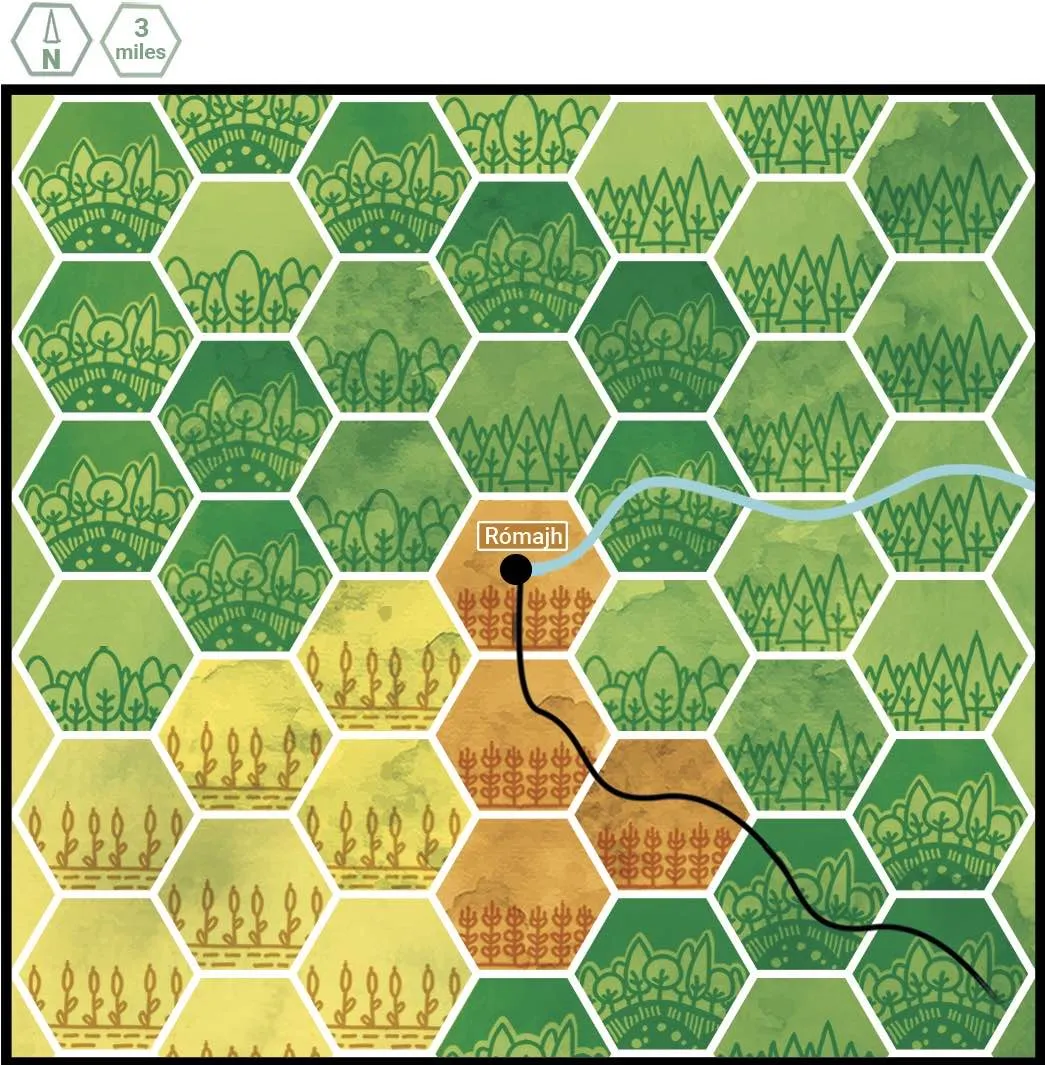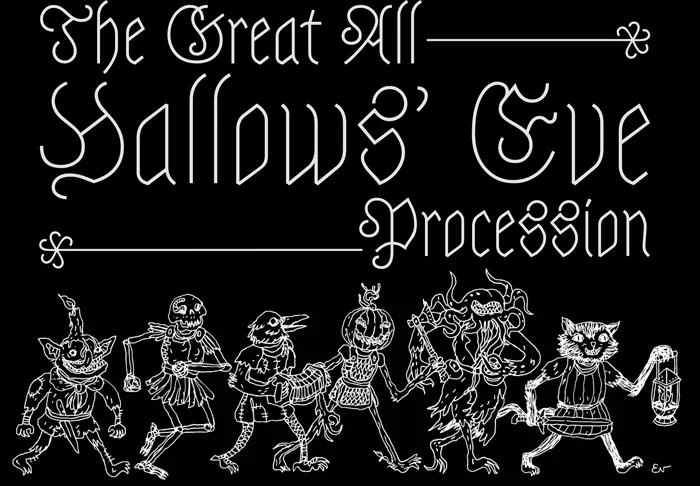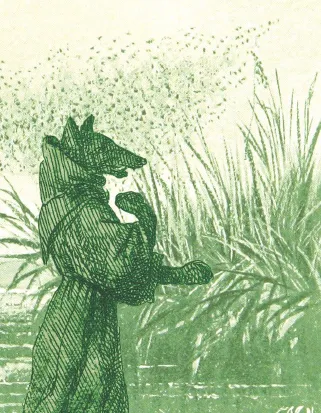Lessons from running the House Under the Moondial with the Great All Hallows’ Eve Procession

This post contains spoilers. If you don’t need a summary of what happened and you just want the lessons I learned, skip to the next heading.
My partner J, who has since become my fiancé, asked me to run a Halloween campaign through October. J loves the Wizard of Oz and I love Over the Garden Wall, so I settled on The House Under the Moondial and Dolmenwood.
I ran for J and two of our friends every week in October, but after that, schedules got complicated. It ended up taking us eight two-hour sessions to finish. J was a Grimalkin Thief, their best friend was a Mossling Cleric, and my best friend was a Human Hunter.
I was going to run Moondial by the book, but after the first session I realized it would take much longer than I thought. On Discord, the author told me that Moondial takes 10-15 four-hour sessions to complete.
So of course, I asked them how to fit it in five two-hour sessions, and they actually gave me some great advice:
Have the Schmidts introduce the PCs to Ellie fast. (I made a small retcon in session 2 to make sure they would investigate Ellie right away.)
Ignore the minutiae of wilderness travel. Justify it by having the witch guide PCs through the fen with her birds.
Have the Wicker Witch or the Visceral Viscountess explain the Moondial Curse to the PCs.
…Except in my game, she wasn’t the Visceral Viscountess, she was the Halloween Queen. I replaced Moondial's Other Side with the Great All Hallows’ Eve Procession.
The campaign ended up like this:
Two-and-a-half sessions of investigating and talking to villagers.
Half a session of meeting the witch (because J split up from the rest of the group to go meet her in session 3).
One session exploring the Saints’ Tomb. My Mossling player was surprisingly invested in Mossling lore, so I added a detail that Mosslings used to worship there.
Two sessions in the Great All Hallows’ Eve Procession. (I cut the final boss fight from that adventure and focused on the weird setpieces.)
Two sessions exploring the House Under the Moondial. We finished the campaign with a little final fight and a Matrix-game-style conclusion.
(Those familiar with Moondial will notice that I cut Captain Báire. I have no nostalgia for Peter Pan and we had plenty else to do.)
But enough of what happened. What did I learn?

Lesson #1: Sandboxes are cool
Structurally, Moondial is about as “vanilla OSR” as you can get. The player-facing map is rectangular (pictured above), but the GM-facing map is the 5x5 hexagon popularized by Mausritter.
Now, I’ve read Mausritter’s guidelines for how to set up a sandbox before. I’ve understood the idea of surrounding a small town with dungeons and factions. And I've understood adventure hooks as ways to get the players into the dungeons.
But I didn’t understand until running Moondial that adventure hooks are clues. A single hook is one clue that leads to a dungeon, but you can chain hooks together into an entire mystery.
I always thought of mysteries as a special, alternative kind of adventure. But Moondial made me realize mysteries are part of the fabric of OSR D&D.
I ended up writing the following notes to drill down on what makes this sort of scenario work:
The Immersive Frontier Mystery
Basic Conceit
Treasure hunters are active
Sympathetic populations are isolated
Law enforcement is more or less absent
Adventure Scenario
Sympathetic population has a problem
Problem has a whiff of treasure
PCs asked to investigate the problem
PCs can choose to…
Help the sympathetic population
Serve their own self-interest
and/or Help some other third faction
Through…
Violence
Trickery
and/or Persuasion
The investigation is an integral component. If you present all the facts of the scenario up front, you'll overwhelm them. And overwhelmed players don't make interesting choices.
The mystery allows you to dole out the scenario piece by piece and allow players to react to it in discrete chunks. It’s a lot like how a dungeoncrawl works, only in this case, it’s clue-by-clue or hook-by-hook instead of room-by-room.

Lesson #2: Linearity is also cool
I ran the first four sessions as a true sandbox where the players could do whatever they wanted. But the Great All Hallows’ Eve Procession had to happen on Halloween, right? So I pulled the sort of thing you might see in a 5E-style campaign and said, “Ellie has run away to the Black Pond! This is an emergency! You have to follow her right now!”
It felt fitting because the Procession itself is a linear adventure. I ran it with a much sillier tone than the rest of the campaign, which felt fitting for a fairy otherworld. I often picked encounters based on what I thought the players would like instead of rolling them.
There were two times the players hit 0 hp where I said, “eh, that wasn’t your fault, you’re not dead, you’re just knocked out, Grimalkin have nine lives or whatever.” The players beat the last encounter via the following argument:
PCs: “We have more cursed coins than you, so shouldn’t we be able to counter your mind-control over the procession?”
Skeletal Preacher: “Well, only I can use the coin because they have skulls on them and I’m a skeleton man and I have a skull.”
PCs: “We also have skulls.”
Skeletal Preacher: “…God dammit!”
Ultimately, J’s Grimalkin PC and Ellie dedicated their lives to the worship of the Halloween Queen and agreed that at least one of them would always be in Rómajh at any given time (so that no one in the village would die from the prismatic storm… it’s a complicated adventure!).
After the PCs went to the Moondial and met St. Elm, I improvised a final boss fight with some of the Wolves of God. I got them there with another 5E-style hook: the Wolves were kidnapping the Wicker Witch! She needed help right away!
Then, because we all wanted to end the campaign, I simply asked two questions: “How do you break the Moondial curse?” and “How do you deal with the cardinal?” (I had decided that it was a part of the cardinal’s evil plan to make the villagers ring the bells at night.) They answered in the course of 5 minutes and we celebrated the end of our first campaign.
So the first half of the campaign was an OSR-style sandbox and the second half was a 5E-style linear adventure. And you know what? The transition between the two didn’t feel awkward or abrupt, it felt seamless.
Sure, there’s a part of me that would love to run this adventure for 10-15 four-hour sessions. But in this instance, what I wanted was to finish the campaign, and it felt so satisfying when we got there.

Lesson #3: Reports of an "NSR" have been greatly exaggerated
I'm a real NSR-head, okay? I've spent years trying to whittle down D&D. The GLOG wasn't light enough, so I turned to Into the Odd. Into the Odd wasn't light enough, so I turned to Tunnel Goons. Tunnel Goons wasn't light enough, so I designed Ruins & Rogues.
But it turns out, Dolmenwood is fun. It's fun to see five kinds of saving throws on your character sheet. It's fun to choose a kindred and a class and get all kinds of abilities. It's fun to roll lots of dice in combat, even when the PCs and the monsters whiff!
And my players got really into the lore in the book. I told them that Moondial's Northwoods setting is literally north of Dolmenwood. The Mossling Cleric's player was very interested in the Pluritine Church and their place within it.
Dolmenwood's item descriptions were also more interesting than those on the free OSR SRD. For example, in Dolmenwood, you can wear wolfsbane so that werewolves have to Save vs. Doom to attack you.
Ultimately, I was really happy with the system. My players never once complained that it was too complicated or too slow or too boring. Which begs the question: NSR, what are we even doing? (I'm joking, of course, haha... OR AM I?)

Conclusion
The three lessons above prove an old truth: theory is nothing without practice. Running Moondial, I learned to appreciate the role of mysteries in D&D. Running Procession, I confirmed my suspicion that linear adventures aren't so bad. And running Dolmenwood, I learned that my life's work is pointless that faithful retroclones aren't so bad after all.
If you're interested in Dolmenwood or either of these adventures, they're great fun. Go play them!